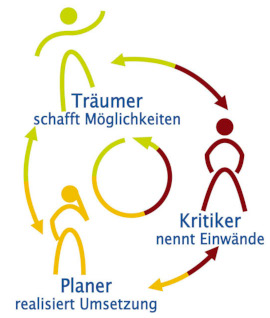NLP Podcast 60: Walt Disney Strategy
 Walt Disney was a very creative mind: He created a world around Mickey Mouse and other comic characters and later opened the first amusement park named Disneyland. Today, Disney movies and Disney amusement parks are world-renowned and especially popular with children. Walt Disney was a dreamer, planner, and critic, and thus became the model for a very well-known NLP format: The three elements of dreamer, planner, and critic are the foundations of the so-called Walt Disney Strategy.
Walt Disney was a very creative mind: He created a world around Mickey Mouse and other comic characters and later opened the first amusement park named Disneyland. Today, Disney movies and Disney amusement parks are world-renowned and especially popular with children. Walt Disney was a dreamer, planner, and critic, and thus became the model for a very well-known NLP format: The three elements of dreamer, planner, and critic are the foundations of the so-called Walt Disney Strategy.
The Walt Disney Strategy
In the Walt Disney Strategy, each of the three elements forms a position, and the client sets an anchor for each of the three elements. Walt Disney had a separate room as an anchor for each position, but usually there isn't that much space. An alternative is room anchors: With a room anchor, the client chooses a specific spot in the room and establishes that spot as a position – for example, the Dreamer. Then the client looks for room anchors for the other two positions as well. The room anchors can be marked with notes placed on the floor, labeled with the respective words Dreamer, Planner, or Critic.
The next step is to go through the three positions. The client starts at the position of 'Dreamer' and only focuses on that position: The client pretends to be exclusively the Dreamer and dreams of their goal and achieving it. The Critic and the Planner remain silent at that moment. After some time, they switch positions and gradually go through all three positions. The Walt Disney Strategy allows the client to approach their goals in a simple way, making the realization of their dreams and goals possible.
In the complete podcast episode, Stephan Landsiedel explains the strategy in detail step by step. He also discusses how the Walt Disney Strategy can be used in team work.
NLP Podcast 60: Walt Disney Strategy
Discover the basics of NLP and learn more – tune in now.







